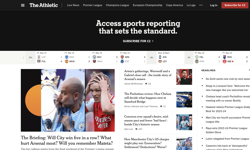In 1986 many free newspapers had to be persuaded to actually accept leaflets. And even if they did, many would only accept full coverage of their area. In other words, if you contacted the Oxford Journal you had to deliver all of Oxford, there was no form of geo-demographic targeting.
Over the subsequent eighteen years the change has been phenomenal, and door drop marketing is now, probably, the most accountable advertising medium in the UK. The industry has gone full circle. Advertisers are no longer being restricted to selecting a newspaper’s coverage but can choose from over 9000 postcode sectors. Some free newspapers now offer targeting down to an individual distributor’s round, which would represent approximately 200 homes.
In 2002 over 10 billion items of unaddressed mail were delivered throughout the UK and this figure is expected to have risen above 11 billion during 2003. Currently, the Direct Marketing Association’s industry census does not tell us what the percentage was for newspaper deliveries, as opposed to Royal Mail and team delivery. However, including local business leaflets, it is likely to be between 60%-70%. This is clearly substantial growth, but the main growth in recent years has been due to the increasing availability of verification data.
Effect of verification data
The introduction of Stepcheck changed our industry. For many years clients had been asking the question "how many of my leaflets are being delivered?" Distribution companies, such as The Leaflet Company and Circular Distributors (and 17 others during the late 80’s!) would all give different answers according to the different methods. All this served to do was to confuse the client and give them no confidence in the medium.
Prior to Stepcheck, the only figure across any method that was available was that supplied by VFD. VFD has always been vital as an auditing process for the delivery of free newspapers and was particularly crucial during the formative years when free newspapers were popping up everywhere. However, at that time, VFD would grant most free newspapers a certificate stating a delivery efficiency in excess of 95%. This caused most clients in the leaflet market to question the validity of this figure, as their data and, in particular, the retailers’, was rarely in excess of 80%. The launch of Stepcheck was a watershed for clients, distribution companies and free newspaper publishers. For the first time there was an independent company contracted only by clients who could tell us the efficiency of delivery across all methods.
It is important at this stage to say that VFD’s role continues to be important as a method of auditing free newspaper delivery, but has become increasingly irrelevant to clients who are delivering leaflets alongside free newspapers. Door drop marketing is now a huge medium, with clients evaluating the results and ROI more than ever. You now have two companies doing what Stepcheck started, and an immense amount of validation data is now available.
Improved distribution standards
The first ever validation result that I can remember was 79% for Woolworths via free newspapers. This was in stark contrast to their ‘VFD’ expectation of 95% plus. Initially, publishers were shocked and weren’t ready to believe the figures. However, great credit is due to those many free newspaper publishers who then sought to analyse the data in more detail.
Having discovered the figures to be broadly accurate they set out to improve distribution standards. At times over the years there have been setbacks to that improvement but the current averages are approximately between 85-87%. Encouragingly, for the first time ever, free newspapers’ efficiency has overtaken that of the Royal Mail. This is particularly impressive considering the enormous growth in volume that publishers have had to contend with.
Approximately 80% of validation data comes from The Leaflet Company’s clients such as Sainsbury’s, Somerfield, B&Q, Superdrug and ASDA. This gives us the opportunity to know in detail the distribution performance of various publishers. The majority are now delivering around 90% efficiency which clients regard as extremely good. As with any industry however you are only as strong as your weakest link and, sadly, there are still publishers who seem unwilling to ensure they raise their standards.
As stated in the March/April issue of InCirculation free newspaper publishers have "enjoyed phenomenal growth over the last few years". However, the indications in 2004 are that this growth is slowing and despite their declining performance, Royal Mail is beginning to take a greater share of the market. As I stated earlier, the success of door drop and the reason that clients such as Superdrug and Somerfield spend over 50% of their budget on it, is that it delivers great ROI compared to many other media. Although ROI is still good, there are signs that it is deteriorating which is cause for concern.
War zones
There are many factors that effect ROI of which delivery efficiency is only one. In recent years free newspaper coverage of the UK has steadily decreased and now only represents 70% of UK households. The wealth and accuracy of client data means that clients know the value to them of each postcode sector. As you can see from the "War zone" illustration, postcode sector N11 1 is roughly equal distance between Tesco, Safeway and ASDA. Grocery retailers would describe this sector as a ‘war zone’ and it would be vital for them to door drop into it. As you can see, free newspapers only cover 1,941 households. None of these retailers could take the risk of not door dropping to 3,747 households, therefore, Royal Mail offering 100% coverage is a more attractive option.
Many factors influence the areas to which free newspapers choose to deliver, and I am sure that the main driver is economics. One of door drop’s greatest strengths is that it is mass coverage and free newspapers must not be so complacent to believe that their improved efficiency alone will win the day. Coverage will continue to be a huge influence on methodology selection.
The other issue concerning successful ROI is creative/recall. We know from Stepcheck and Frontdoor research that recall will vary. There are many reasons for this variance, such as size of item (A3 gets better recall than A4!), quality of offer and creative treatment. Many clients are seeing a dip in recall with free newspapers which probably relates to the increased volumes being delivered.
Admittedly, some of the responsibility in this area is with the client to get the creative and the offer right. However, generically less interesting leaflets, such as insurance and credit offers, struggle to compete. As a result, they tend to get better ROI from Royal Mail and solus delivery, despite the substantial increase in cost as this gives them a less competitive environment in which to get their message seen.
Second day delivery
I know the volume issue is a concern to many free newspapers from a logistical point of view. There are times of the year such as Easter, bank holidays and the run up to Christmas when distributors will have a huge weight of leaflets to carry. To continue to compete in the future, we need to develop a form of second day delivery to ensure growth to free newspaper publishers.
However, to attract clients, national coverage is needed for a second day delivery to be taken seriously. At present only a few publishers are showing the necessary initiative to move forward. It could command a premium price and overcome the clutter issue that many free newspapers are currently suffering from.
Door drop marketing is now a medium in its own right with the media spend alone in excess of £300 million. Clients are taking it seriously and publishers must if they are to fight off the predators such as Royal Mail , TPG and national press inserts. Commitment from senior management and a willingness to develop the letterbox market will be vital.
FEATURE
No room for complacency
Free newspapers have made great strides in improving distribution efficiency. The Leaflet Company’s Mark Young applauds their efforts, but warns that declining coverage and deteriorating ROI means that publishers can not afford to rest on their laurels.










